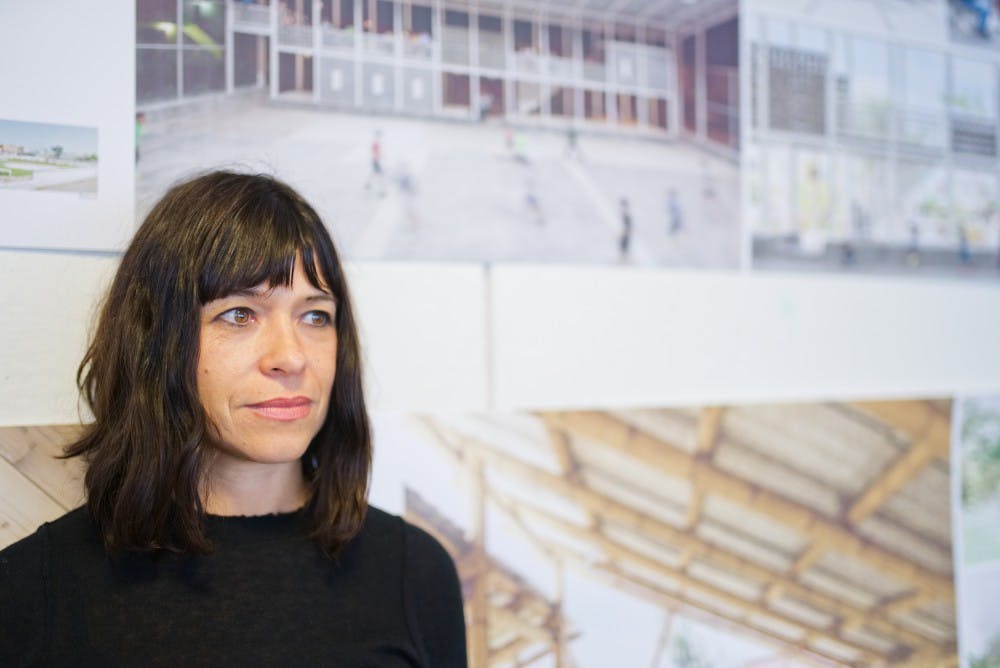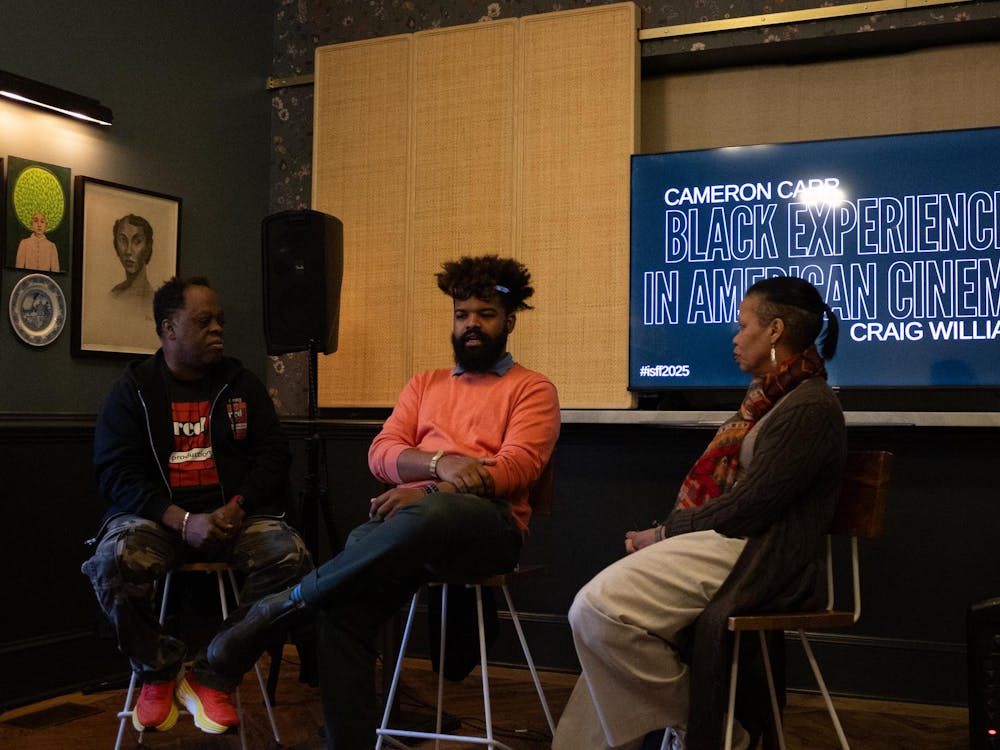For many, the term architecture brings to mind images of sleek, abstract buildings and elaborate schematics that serve as part engineering demonstrations, part aesthetic showcases. But for young design professionals like Rozana Montiel, lecturing this year for the A-School’s annual Michael Owen Jones Lectureship, architecture is not just a technical craft. It is fundamentally about human narrative. She strongly believes that “a project comes from a story.” Arts and Entertainment sat down with Montiel to explore her studio’s work and design principles.
Her architecture firm, Rozana Montiel Estudio De Arquitectura, is based in Mexico and made up almost entirely of women professionals. Montiel is confident and has found success despite historical preferences for male professionals. “Now is a very good moment for Latin American women,” she said. Winning design competitions and demonstrating their team’s talent, she added, “gives trust to clients and institutions to believe more that women can do it.”
Montiel recalled her formative years, supported by art collector parents who let her design her own bedroom as a child. “It wasn't something that was very common, that you could design your bedroom and put all these things so everybody wanted to go to my room and have fun there,” she said, chuckling. Her bedroom became her own quirky, personal story. Montiel’s affinity for stories is essential to how she sees her work. “If I wouldn't have been an architect, I would have studied literature.”
An early, undergraduate exercise at the Universidad Iberoamericana cemented her interest in architecture. She designed a mobile, glass-blown, Trojan horse sculpture with design flourishes inspired by famous Mexican painter Rufino Tamayo, such as the glass surface reflecting ambient light to create colors reminiscent of Tamayo. The horse was an object of architecture, but it was also art.
“It's not only about just putting walls in a roof and being very pragmatic about a program, [it’s] about doing, you know, a real exercise,” Montiel said. “You can also use your imagination and use creativity to make these, like really, fictional creatures and tell different types of stories with a project.”
In a politically-topical turn, the conversation drifted to the concept of walls, separating spaces and the impacts of such actions. Montiel explained “Fly on the Wall,” a course she recently taught at Cornell exploring President Donald Trump’s proposed border wall.
“We were seeing the wall prototypes that Trump did [in San Diego, on a field trip]” Montiel said. “And so we were peeping through the wall and seeing the prototypes. And suddenly, there comes like five or six guys like really walking fast — very strange guys with backpacks,” she said. “I was really afraid they [were] going to rob us ... and suddenly we stopped and, just where the window is, they start climbing the wall. They jumped over the wall.”
Montiel and her students were directly witnessing what they had discussed for a semester in purely theoretical terms.
“‘These guys are jumping the wall, they're crossing the wall in front of us!’ We saw it directly, once you see it, it's so different ... Imagine for the students the importance [of] that,” Montiel pointed out.
The experience had a dramatic effect on the class, and beyond studying a hypothetical barrier, the students saw firsthand how architecture blurred boundaries across fields.
“You involve economics, you involve politics, you involve many things that are also architecture and that can inform your projects,” explained Montiel.
Montiel has tried to make walls permeable in her practice directly, such as in her recent 2018 installation in Venice, “Stand Ground.” The installation sought to turn a wall in Arsenale into an engaging window into the city itself.
“Why don't we take this wall and we bring it to the floor? ... So instead of being in the wall it becomes a floor, a floor that unites,” she said. “It was called Stand Ground because we stand with the position of changing barriers into boundaries. We stand with the position that we don't want to build more walls, but we want to make them permeable. We want to change them.”
Montiel has previously claimed that “beauty is a basic right.” She explained her meaning by recalling the impact a pro bono house design had on a family who lost their old home in Ocuilan, Mexico after an earthquake. She recalled how the son instantly began to respect their new home, going so far as to urge his family to take off their shoes when walking inside. “He feels so proud that, again, when he feels ownership, he takes care of the house.”
The boy’s reaction moved her. “I for sure know that his mindset has changed, his perception of what a space is has changed, and he's gonna, when he grows [up], he's gonna look for a better place,” Montiel said. “He now will see beauty in a different way. He will expect something better for his life and for his family, for his coming family. He's a kid. He's 5 years old, and he now can perceive it.”
For Montiel, the anecdote is a validation for architecture and design’s ability to both tell stories as showcases and to be a host to stories created by its inhabitants.
“I like to tell stories, and I like to bring stories to people, but I also like when they create their own stories about the space that they need,” she said.







